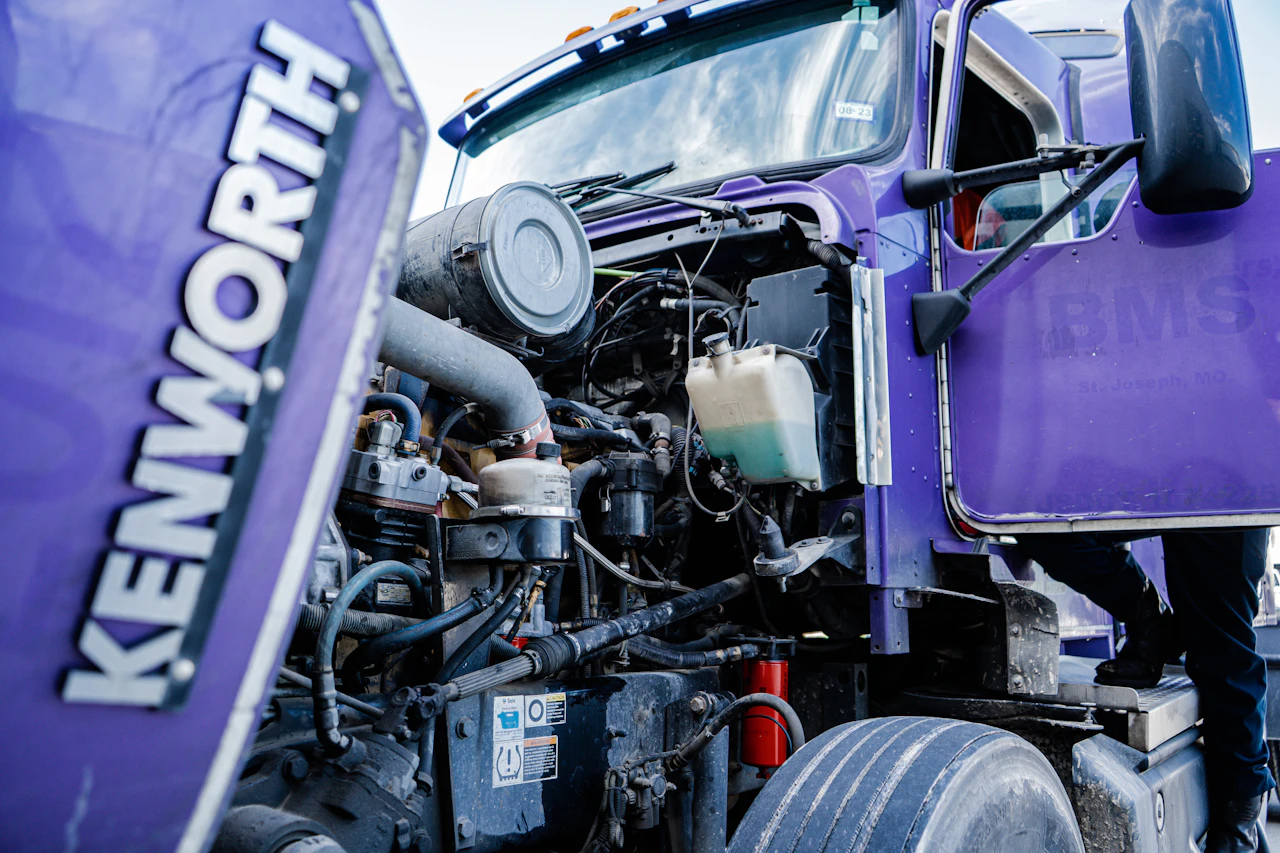6 Common Kenworth Engine Problems (and the Fixes That Actually Work)
6 common Kenworth engine problems, like turbo failures, EGR issues and coolant leaks and the fixes that keep your truck running strong.

Kenworth trucks are workhorses of the heavy-duty world, but even the toughest rigs throw codes and break down. Whether you’re running a T680 down the coast or hauling heavy loads up the I-5, it pays to know the common Kenworth engine problems. And it’s even more important to understand how to fix them without chasing your tail.
Here’s a no-nonsense breakdown of the most common Kenworth engine problems and the proven fixes that’ll keep your rig on the road.
1. Exhaust Gas Recirculation (EGR) Valve Failure
The Problem:
More often than not, the culprit in Kenworth engine issues is a faulty EGR valve. These valves are responsible for lowering combustion temperatures by recirculating exhaust gases back into the engine. If not regularly serviced, soot and carbon build-up can cause sticking, leading to poor engine performance, loss of power, and even limp mode.
The Fix:
First, try cleaning the EGR valve and the associated cooler. If the valve is sticking even after cleaning or showing signs of sensor failure, it’s time for a replacement. Regular use of fuel additives and preventive maintenance helps reduce soot buildup.
Pro tip: Don’t ignore early signs. A rough idle or decreased fuel efficiency could indicate that your EGR is on its way out; schedule maintenance to stay ahead of it.
2. Diesel Particulate Filter (DPF) Regeneration Failures
The Problem:
Regeneration issues are bound to occur on any Kenworth equipped with a DPF system, particularly during urban or short-haul routes where the system doesn’t reach sufficient temperatures. When a regeneration fails, your truck may derate or display multiple codes.
The Fix:
Run a forced regeneration using diagnostic software if passive regen isn’t cutting it. If this doesn’t cut it, the DPF might need to be professionally cleaned or replaced. Also, check for faulty DPF sensors or damaged wiring. These are often overlooked.
Keep in mind: Ignoring this issue for too long can escalate into SCR and DOC failures, resulting in an exponentially higher repair bill.
3. Turbocharger Failure
The Problem:
Turbo problems in Kenworths—especially in engines like the PACCAR MX-13—can manifest as whistling noises, a lack of boost, oil leaks, or black smoke. It often stems from oil contamination, faulty actuator motors, or excessive backpressure in the exhaust.
The Fix:
Inspect and replace oil filters regularly to avoid debris hitting the turbo fins. If your turbo actuator is electronic, ensure it’s calibrated and functional. Replacing the entire unit may be necessary if there’s shaft play or damaged blades.
Heads up: A failed turbo doesn’t just kill power; it can also flood your intercooler with oil, creating a fire hazard.
4. Sensor Gremlins (Coolant Temp, Oil Pressure, and Boost Sensors)
The Problem:
Modern Kenworth engines rely heavily on sensors, and even a minor malfunction can cause significant problems. Coolant temp sensors might send false overheating signals. Boost sensors can trigger turbo codes when the engine is operating properly. Oil pressure sensors might cause shutdowns even when the pressure is solid.
The Fix:
The first thing to do is clean the connectors and check for corrosion or fraying. If readings are still off, replace the sensor. In some cases, it’s not the sensor. It’s the wiring harness or a failing ECM.
Don’t guess: Use a proper diagnostic tool to verify the root cause. Sensor swaps without diagnostics can turn into a frustrating (and expensive) guessing game.
5. Oil Leaks from the Rear Main Seal
The Problem:
Noticed a puddle under your Kenworth? It might be the rear main seal. This is a notorious leak point on many PACCAR and Cummins engines. Over time, heat and wear cause the seal to dry out or crack, allowing oil to leak between the engine and transmission.
The Fix:
Unfortunately, this one’s not a quick fix. Replacing the rear main seal requires removing the transmission and, in some cases, the flywheel. But don’t cheap out. Be sure to install a high-quality seal and inspect the crankshaft surface while you’re in there.
Pro tip: If you’re already pulling the transmission for clutch work, it’s the perfect time to inspect and replace this seal.
6. Coolant System Failures
The Problem:
PACCAR engines in Kenworths are known for causing headaches with their coolant systems. From faulty thermostats to cracked EGR coolers and leaking water pumps, it happens! These issues can lead to engine overheating, which can be fatal if left unchecked.
The Fix:
Flush the system and perform a pressure test. Replace worn hoses, gaskets, and faulty components, such as the water pump or thermostat. Also, check the concentration and quality of your coolant. Over time, coolant breaks down and loses its ability to absorb radiant heat.
Watch for white smoke: This could indicate that coolant is entering the combustion chamber due to a faulty head gasket or EGR cooler.
Bonus Tip: Don’t Skip the Basics
Every single one of these problems can be exacerbated, or even caused, by poor maintenance. That means:
- Stick to regular oil changes.
- Keep up with coolant flushes.
- Don’t ignore the check engine light.
- Run diagnostic checks monthly if you have a fleet-based operation.
It sounds simple, but it’s often the neglected details that lead to big-dollar repairs.
Keeping Up With PM Keeps You Running
Your Kenworth is built to handle the long haul—but that doesn’t mean it’s bulletproof. By keeping an eye out for these common Kenworth engine problems and addressing issues early, you can save yourself downtime, headaches, and a significant amount of repair costs.

